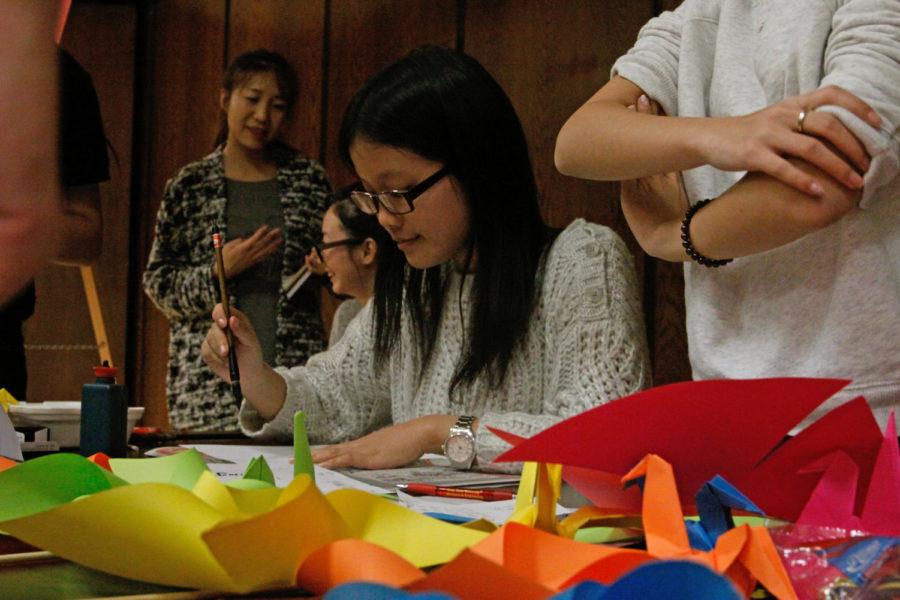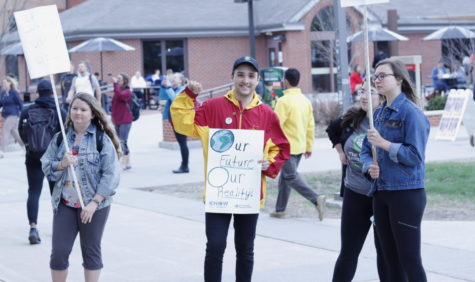International Bazaar connects students from all over the world
Yingxian Wang, sophomore in mechanical engineering, writes guests’ names in calligraphy at the Chinese Students and Scholars Association’s table during the International Bazaar on Nov. 18 as part of International Week.
November 19, 2013
With one step students entered a trip around the world. Monday night, customs and traditions from all over the world came to Ames.
From Africa to Russia to Sri Lanka, participants in the Monday, Nov. 18 International Bazaar could learn about different cultures customs and traditions.
As part of International Week, 10 student organizations displayed their countries traditional cloth, food and ceremonies.
The only requirement the organizations had to fulfill was that they were multicultural, but everything they wanted to do was up to them. Many put up posters with fast facts about their countries and brought traditional clothing people could try on.
“The organizations have a table and present their culture and get to share it with people, and we try to have them be as interactive as possible,” said Savannah Putnam, junior in biology and event coordinator.
Participants could learn a few words in Swahili and Tigrinya from representatives of the African Student organization, play a game called ttakgi that is a popular paper-disk game in Korea, receive blessings in the su kwan ceremony originated from Laos and have their name written in Chinese calligraphy.
A particular favorite among the audience of the International Bazaar was the option to dress up in different traditional clothing, Putnam said. Next to the more known saris from India, people could also try on hijabs, the traditional headdress of Muslim women. The Sri Lankan student association offered the countries special clothing called osaryia, clothes dyed with a special manual wax-resist dyeing technique called batik.
“You could also fill out a piece of paper and see what your name looked like in each language, and get henna done on your hands,” Putnam said.
Music from all 10 countries played, and half way into the event over 150 visitors had come to the Sun Room to meet students from around the world, chat with them and have pictures of themselves taken wearing foreign clothing.
The co-chairs of the event Susan Beisel, sophomore in linguistics, and Liuran Fan, graduate student in human development and family studies, said they were both extremely happy with the outcome of the event.
People were able to learn a lot about the different countries and the interaction between the international students. The interaction of students has been improved greatly since last year’s event.
“This event is unique in the fact that you can talk to people and really get their experiences. People really like it because it is a chance to meet people who you would normally not meet and cultures you wouldn’t see,” Putnam said. “In the middle of Iowa, you don’t get a ton of diversity. However, when you go to this event everybody is welcoming.”
Fan who was a representative of the Chinese Student Association in 2010 said she agreed.
“As a participant, it is joyful,” Fan said. “You bring joy to other people, and share your culture.”
In addition to the different student organizations’ booths, students could make donations to the Hearts for the Philippines organization to help victims of Typhoon Haiyan and also learn about a study abroad experience in Norway.
Putnam said she was very pleased with how the event went.
“People who went here where not just audience members, they were active participants,” Putnam said. “They received unique give-aways and met people form all over the world, and for even just a little while they could see the world.”

















